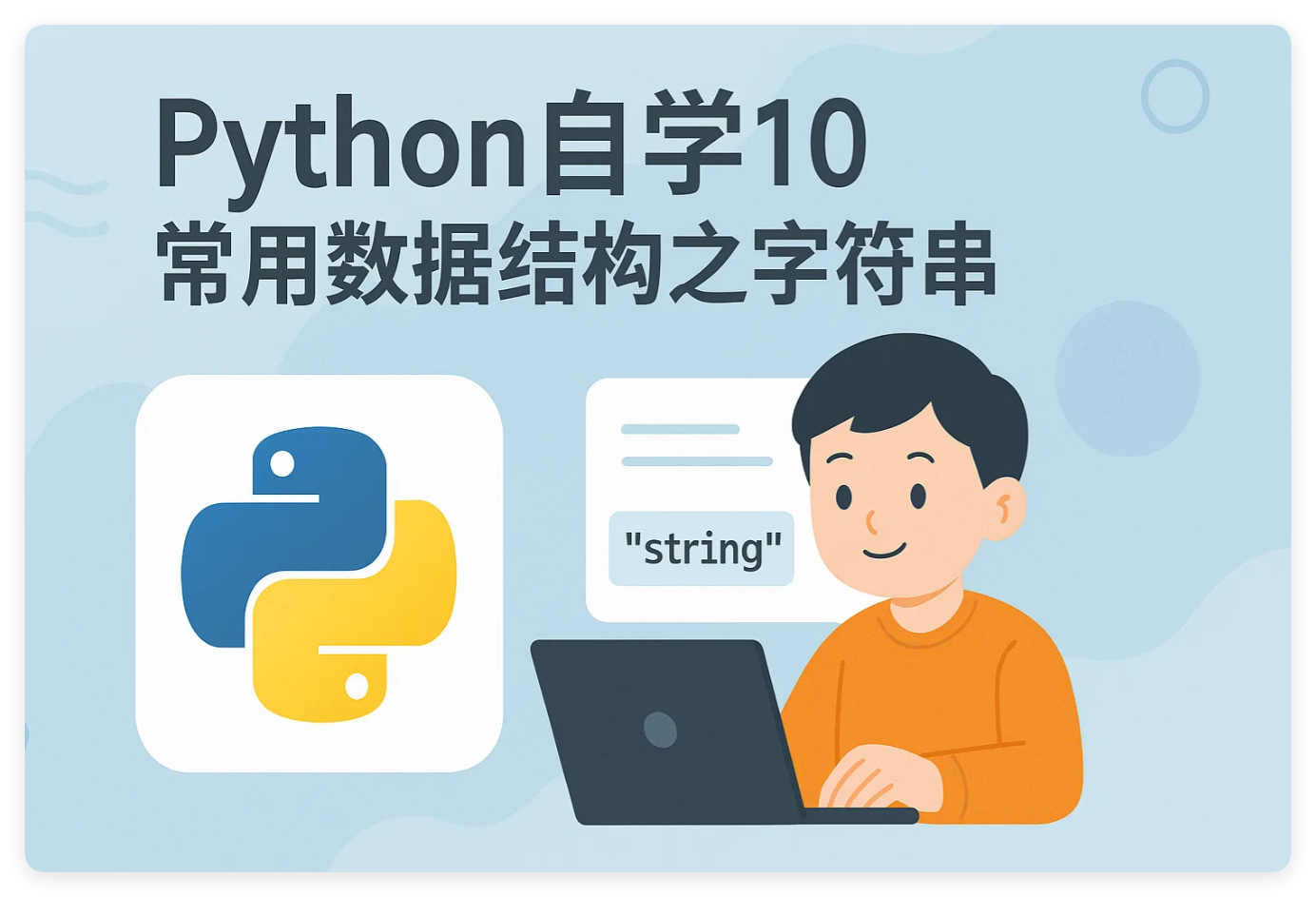Python自学10-常用数据结构之字符串
Python自学10-常用数据结构之字符串
前言
在Python里,字符串(str)几乎是最常用的数据结构之一。无论是日志处理、文件解析,还是Web开发、数据分析,你都会频繁和字符串打交道。
今天这篇文章,我们就来聊聊 Python字符串的常见操作和实用技巧。如果你能把这些方法都玩熟,写代码时就能少走很多弯路。

一、什么是字符串?
在Python中,字符串就是用 单引号 '...' 或 双引号 "..." 包裹起来的一段文本。比如:
s1 = 'Hello'
s2 = "Python"
print(s1, s2)
输出:
Hello Python
另外,Python还支持 三引号字符串('''...''' 或 """..."""),常用来写多行文本:
msg = """星哥玩云
Python自学系列文章
字符串篇"""
print(msg)
二、字符串的常见操作
1. 拼接与重复
a = "Python"
b = "学习"
print(a + b) # 拼接
print(a * 3) # 重复
输出:
Python学习
PythonPythonPython
2. 索引与切片
字符串和列表一样,也能通过 索引 访问字符。
text = "Python"
print(text[0]) # P
print(text[-1]) # n
print(text[0:4]) # Pyth
3. 大小写转换
s = "hello world"
print(s.upper()) # HELLO WORLD
print(s.lower()) # hello world
print(s.title()) # Hello World
print(s.capitalize()) # Hello world
4. 查找与替换
s = "I love Python, Python is great!"
print(s.find("Python")) # 7
print(s.rfind("Python")) # 14
print(s.replace("Python", "Java"))
5. 拆分与拼接
s = "apple,banana,orange"
print(s.split(",")) # ['apple', 'banana', 'orange']fruits = ['apple', 'banana', 'orange']
print("-".join(fruits)) # apple-banana-orange
6. 判断类型
print("123".isdigit()) # True
print("abc".isalpha()) # True
print("Hello123".isalnum()) # True
print(" ".isspace()) # True
7. 去除空格
s = " Python "
print(s.strip()) # 去掉首尾空格
print(s.lstrip()) # 去掉左边空格
print(s.rstrip()) # 去掉右边空格
三、字符串格式化
1. f-string(推荐)
name = "星哥"
lang = "Python"
print(f"你好,我是{name},我正在学习{lang}")
2. format方法
print("你好,我是{},我正在学习{}".format("星哥", "Python"))
3. 百分号格式化
print("你好,我是%s,我正在学习%s" % ("星哥", "Python"))
四、实战小练习
👉 练习1:统计一段文本里某个单词出现的次数
text = "Python is great, Python is easy to learn."
count = text.lower().count("python")
print(f"Python 出现了 {count} 次")
👉 练习2:快速生成一个SQL查询语句
table = "users"
column = "name"
value = "Alice"
sql = f"SELECT * FROM {table} WHERE {column} = '{value}'"
print(sql)
五、总结
- 字符串是Python里最常用的数据结构之一
- 掌握 切片、拼接、查找、替换、格式化 等常见操作,可以让你写代码更高效
- f-string 是目前最推荐的格式化方式,既简洁又直观
字符串看似简单,但其实在日常开发中,很多Bug和技巧都和它相关。建议你多练习,尤其是文本处理和日志分析的场景。
